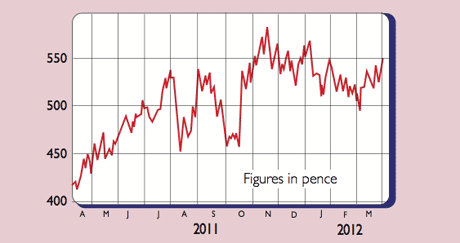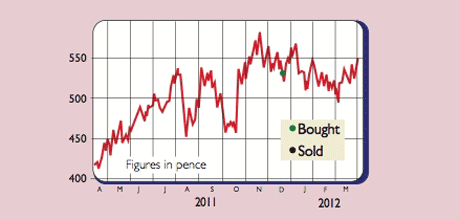Shares in focus: Can this power station group still deliver?
Owners of Britain's biggest coal-fired power station, Drax, should have a decent year. But with carbon reduction costs mounting, should you still buy its shares? Phil Oakley investigates.
Drax should have a decent year, but will struggle thereafter, says Phil Oakley.
The business
Drax Group's main asset is the Drax power station the largest coal-fired power station in Britain. Located at Selby in North Yorkshire, it has a capacity of 3,960 megawatts and can meet 7% of Britain's electricity demand. Drax also owns a supply business called Haven Power, which sells electricity to companies and makes some money from byproducts such as ash and gypsum.
The history
Drax power station was built in two stages in 1974 and 1986. After the privatisation of the electricity industry in 1990, National Power owned Drax.
MoneyWeek
Subscribe to MoneyWeek today and get your first six magazine issues absolutely FREE

Sign up to Money Morning
Don't miss the latest investment and personal finances news, market analysis, plus money-saving tips with our free twice-daily newsletter
Don't miss the latest investment and personal finances news, market analysis, plus money-saving tips with our free twice-daily newsletter
In 1999, the firm was sold to US company AES for £1.9bn. Under AES's ownership, Drax was loaded up with too much debt. This almost proved fatal when British power prices fell in the early 2000s. Ownership of the power station passed to the firm's creditors until Drax was listed on the stock exchange in 2005.
Since then, Drax has battled with fluctuating power prices and rising environmental pressures. However, its investment in new turbines and biomass facilities has led to it becoming the most efficient coal power station in Britain. This means it remains an important part of the British electricity market, for now.
The chief executive
Dorothy Thompson has been chief executive since 2005. She has plenty of experience of the power generation industry, having previously worked for InterGen (a joint venture between Shell and Bechtel) and Powergen.
Thompson has been a staunch defender of the key role Drax plays in keeping the lights on in Britain. She also has to deal with constant criticism from environmental groups. Under her stewardship Drax's carbon emissions have been cut by around 2.4 million tonnes per year since 2006.
Should you buy the shares?
This year should be another decent one for Drax. Thereafter, the outlook is more difficult profits and dividends look set to fall sharply. This is mainly due to the cost of buying allowances for emitting carbon. Drax emits around 21 million tonnes of carbon per year, but has not had to pay for 9.5 million tones under national allocation plans. It will have to start paying for these in 2013.
The bad news doesn't stop there. The British government believes that the market price of carbon allowances is too low to give an incentive to develop clean power technologies. So it is introducing a tax that will guarantee a minimum price. This will rise every year until 2030, which is bad news for Drax. City analysts reckon that profits could fall by £100m in 2013.
Drax will also have to spend £200m to comply with the Industrial Emissions Directive by 2016. In response to these challenges, the firm plans to burn more biomass (wood chips and straw pellets) to reduce its carbon footprint. It reckons that it could generate half its electricity from biomass, but would need to spend £500m on its assets to do this. At the moment, the board believes that the subsidies for biomass electricity are not high enough to justify doing so.
However, even if the prices were high enough, the logistics of supplying Drax with enough sustainable biomass are complicated. It would not be possible to source enough biomass from the UK. Countries such as Canada would be a more sensible choice, but would add on extra transportation and currency costs.
Environmental concerns aside, Drax is clearly a good asset. With £225m of cash on its balance sheet, it is also well financed. Some analysts have raised the question as to whether the company is a takeover target. They argue that it might fit well with a company like Centrica, which has a big energy-supply business.
Centrica gets about 5% of its electricity needs from Drax and more electricity from coal would reduce its exposure to gas prices. This sounds fine in theory, but whether Centrica or anyone else would pay more than the current share price given all the uncertainties Drax faces, remains to be seen. Sell.
The numbers

Stockmarket code: DRX
Share price: 543p
Market cap: £1.98bn
Net assets (Dec 2011): £1,303m
Net cash (Dec 2011): £225m
P/e(current year estimate): 10.5 times
Yield (prospective): 4.7%
City Analysts
Buy: 7
Hold: 4
Sell: 9
Average price target: 543p
Director shareholding

D Thompson: 63,569
T Quinlan: 2,500
P Emery: 30,551
Get the latest financial news, insights and expert analysis from our award-winning MoneyWeek team, to help you understand what really matters when it comes to your finances.
Phil spent 13 years as an investment analyst for both stockbroking and fund management companies.
After graduating with a MSc in International Banking, Economics & Finance from Liverpool Business School in 1996, Phil went to work for BWD Rensburg, a Liverpool based investment manager. In 2001, he joined ABN AMRO as a transport analyst. After a brief spell as a food retail analyst, he spent five years with ABN's very successful UK Smaller Companies team where he covered engineering, transport and support services stocks.
In 2007, Phil joined Halbis Capital Management as a European equities analyst. He began writing for MoneyWeek in 2010.
-
 The political economy of Clarkson’s Farm
The political economy of Clarkson’s FarmOpinion Clarkson’s Farm is an amusing TV show that proves to be an insightful portrayal of political and economic life, says Stuart Watkins
-
 Profit from leisure sector as consumers go on spending spree
Profit from leisure sector as consumers go on spending spreeThe UK leisure sector had a straitened few years but now have cash in the bank and are ready to splurge. The sector is best placed to profit